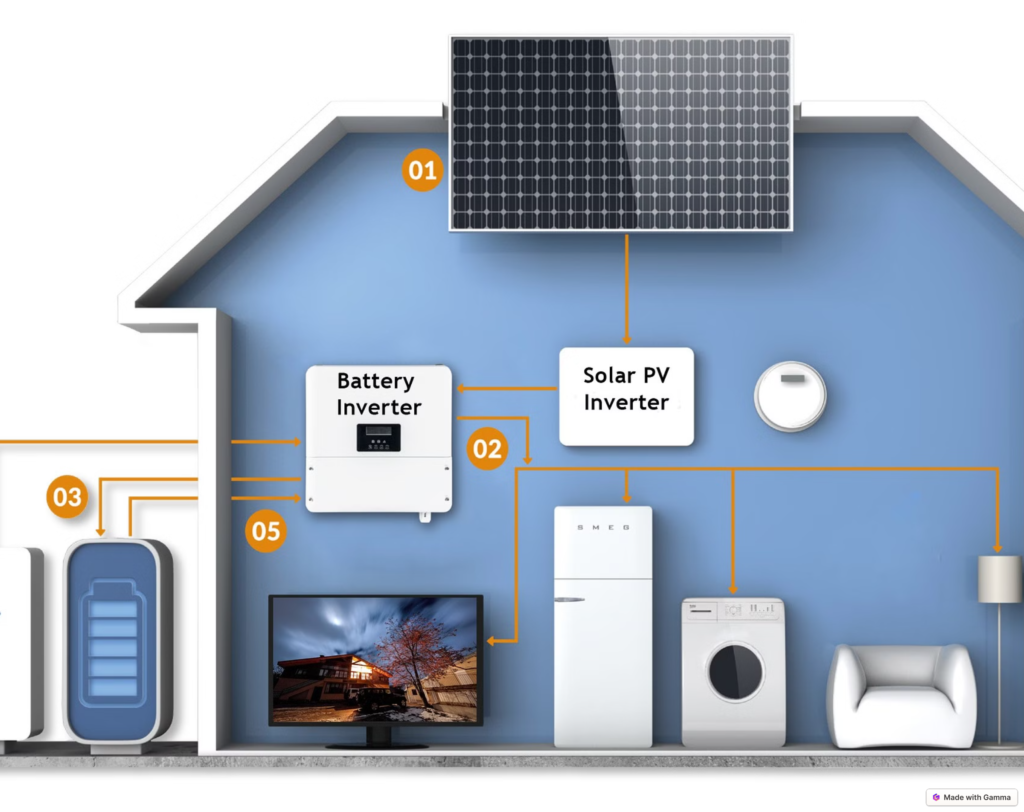The technological advantages of shingled solar panels are mainly reflected in the following aspects:
Eliminate the shadow occlusion of the welding strip and increase the current density: In traditional modules, the battery cells are connected by busbars. The extensive use of busbars increases the internal loss of the module and reduces the conversion efficiency of the module. The shingled module uses laser slicing technology to cut the entire battery into several small battery strips, and then flexibly connects the small battery strips in layers with conductive glue. It abandons the traditional battery strip series connection structure and adopts a design without a main grid, reducing the light-blocking area of the metal grid lines, thereby increasing the output power of the module.
The solar cells have no spacing, expanding the light-receiving area: In the shingled module, there is zero spacing between the solar cells and the stacked cells. Under the same area, more solar cells can be encapsulated, effectively expanding the light-receiving area of the solar cells. The power generation gain can reach up to 18.5%, and the module efficiency is increased by approximately 18%, which is much higher than module technologies such as half-cell multi-busbar.
Reducing resistance loss and minimizing thermal power loss: The shingled module adopts a design without welding strips, significantly reducing the line loss of the module. Meanwhile, the solar cells are flexibly connected through conductive adhesive, ensuring uniform stress distribution and a reduction in the overall operating current. This effectively reduces ohmic heat loss and minimizes the impact of reverse current on the hot spot effect of the module, thereby greatly enhancing the module’s resistance to hot spots.
Reduce the risk of hidden cracks and improve the reliability of components: Components that adopt the shingled technology have cells flexibly connected by conductive adhesives. This not only enables them to adapt to thinner silicon wafers, reducing the risk of hidden cracks, but also, even if hidden cracks occur, due to the cells being connected by conductive adhesives, the stress distribution is uniform. The maximum length of hidden cracks may only extend to 1/6 of the entire cell (determined by the number of slices), effectively limiting the impact of hidden cracks to a smaller area. The power loss of the components will also be less.
Reduce the impact of shading and enhance the anti-shadow capability: Under partial shading conditions, the power decline of the shingled module is linearly related to the shaded area, and its performance is superior to that of traditional modules. For example, when the components are installed vertically and the bottom string is blocked, the power attenuation of the conventional half-cell module is 50%, that of the conventional full-cell module is 100%, while the power attenuation of the shingled module is only 33% when a single row of cells fails. When the components are installed horizontally, the bottom string is blocked. The power of both the conventional whole and half modules is reduced by 33%, while for the shingled module, only the power of a single row of battery failure is reduced by 17%.
Compatible with thinning, reducing material costs: The shingled module can adapt to thinner silicon wafers and has inherent advantages in further technological development directions such as thinning and de-precious metal removal, which helps to reduce material costs and improve the economic efficiency of the module.


